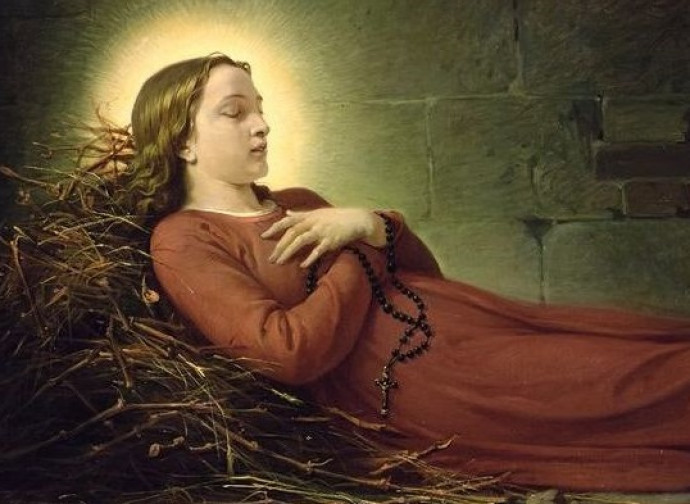Saint Germaine Cousin
Those who do not believe in Christ will consider St. Germaine Cousin (c. 1579-1601) an unhappy girl who led a meaningless life. Those who believe will instead see her as an exemplary image of the Crucified and Risen One, ready to share her sorrows and be clothed with His glory.

Those who do not believe in Christ will consider St. Germaine Cousin (c. 1579-1601) an unhappy girl who led a meaningless life. Those who believe will instead see her as an exemplary image of the Crucified and Risen One, ready to share her sorrows and be clothed with His glory.
From a small French village near Toulouse, Germaine was born with a malformed hand and had suffered from scrofula, a disease that disfigured her face. The physical suffering was soon compounded by the death of her mother, Marie Laroche. Her father, a farmer named Laurent, remarried, but his second wife subjected Germaine to all sorts of mistreatment, convincing her husband to keep her away from her other children.
The girl slept in the stable, deprived of any family comfort. During the day she was sent to graze the sheep. She grew up without any prospect of marriage or education. Yet, in that daily exercise of humility and patience, she was not alone. Adorned with an extraordinary sense of God's presence, Germaine began to pray the Rosary and go to Mass every day. In those daily moments she entrusted the sheep to Providence, and it never happened that any of them were killed or wounded, even though the pasture bordered on a forest full of wolves. She practised numerous penances in reparation for the sacrileges against the Blessed Sacrament and the Virgin Mary, which at that time, with the spread of Protestantism and the wars of religion, had become very frequent.
Her piety grew every time a feast in honour of Our Lady approached. When she heard the bell of the Angelus she immediately knelt down, even if she was in the middle of a stream. Some mocked her by calling her a bigot, but with the passage of time most had to reconsider, seeing that Germaine was accompanied by clear divine signs. One day, while she was on her way to Mass, some peasants mocked her, asking her how she was going to cross the stream in full flood, but the waters opened up in front of her and she didn't even get her clothes wet. The same event occurred other times. Despite her poverty, she gave the poor the bread she had and taught them the basic truths of faith, passing on to them her love for God.
Even her father, at a certain point, regretting his behaviour toward her, invited her to stay at home, but Germaine begged him to allow her to remain in her humble bed, a pallet of vine twigs. And that was where her father, who had begun to understand how full his daughter's life was, found her lifeless body one morning. It was 1601, she was about 22 years old, and she was buried in the parish church of Pibrac.
Forty-three years later her body was found to be uncorrupted, although it had not been embalmed. The same prodigy was found in the 1661 and 1700 viewings of the body, documented by the written depositions of the vicars general of Toulouse. Her relics, which in the meantime had become the cause of various miracles, were partly desecrated by the French revolutionaries. In the meantime, the process for her canonization had begun, concluded during the pontificate of Blessed Pius IX, who proclaimed the sanctity of Germaine in 1867.
Patroness of: the sick, the weak, the disinherited, shepherds and abandoned people




